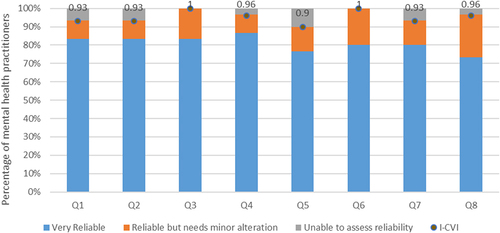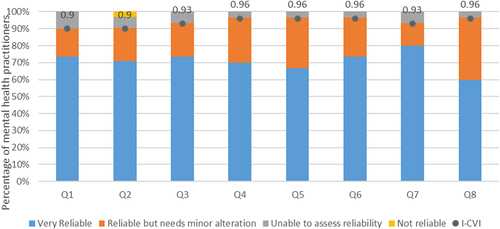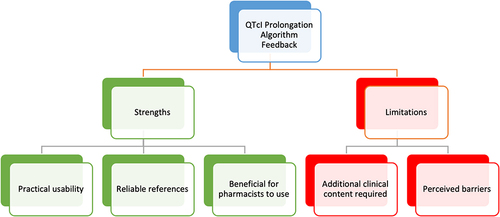Figures & data
Table 1 I-CVI Scores of the Decision Steps in the QTcI Prolongation Algorithm
Figure 2 I-CVI scores for the appropriateness of algorithm decision steps.

Figure 3 I-CVI scores for the safety of the QTc Prolongation Algorithm decision steps.

Figure 4 I-CVI scores for the reliability of references used in the QTc Prolongation Algorithm decision steps.

Figure 5 Emerging themes from participants’ feedback about the QTcI Prolongation Algorithm decision steps.

Table 2 Management of QTc Prolongation in Patients Receiving Antipsychotic Drugs

